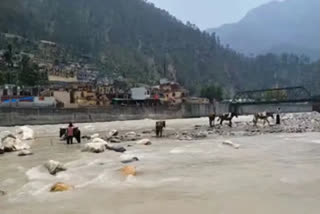Bengaluru:The Ganga is the lifeline of more than half a billion Indians. Anthropogenic activities – activities driven by humans – have had disastrous impacts on this river, from severe pollution to changing its course. Catastrophic landslides and floods in the Ganga basin have become more frequent in recent years.
A new study published in Scientific Reports by researchers at the Indian Institute of Science (IISc) and the Indian Institute of Technology, Kanpur (IITK) provides insights into how climate change and anthropogenic activities like building dams affect the region. It analyses the effects of past human activity on the mountainous regions, focusing on two major tributaries, Bhagirathi and Alaknanda, which merge at Devprayag to form the Ganga.
The researchers examined data on rainfall, water discharge in the rivers, and sediment load from weather stations across the Upper Ganga Basin (UGB) corresponding to the years 1971-2010. They analysed the data corresponding to two periods: pre-1995 and post-1995. What they found was a steady increase in the number of flooding events in both river basins after 1995. Further, the change in low flows and middle-level flows in Bhagirathi can be attributed to three major dams – Maneri, Tehri, and Koteshwar – on the river, they say.
The Alaknanda basin saw a doubling of water flow from 1995 to 2005 at the Joshimath weather station. There has also been an increase in the rate of flow of water, termed extreme flow. “We observed that Alaknanda basin has a high, statistically increasing rainfall trend, unlike the Bhagirathi basin. Most of these trends were observed in the downstream region of the Alaknanda. Therefore, we have also seen an increase in [the] magnitude of extreme flow in these regions,” says Somil Swarnkar, a postdoctoral fellow at the Interdisciplinary Centre for Water Research (ICWaR), IISc, and first author of the study.
